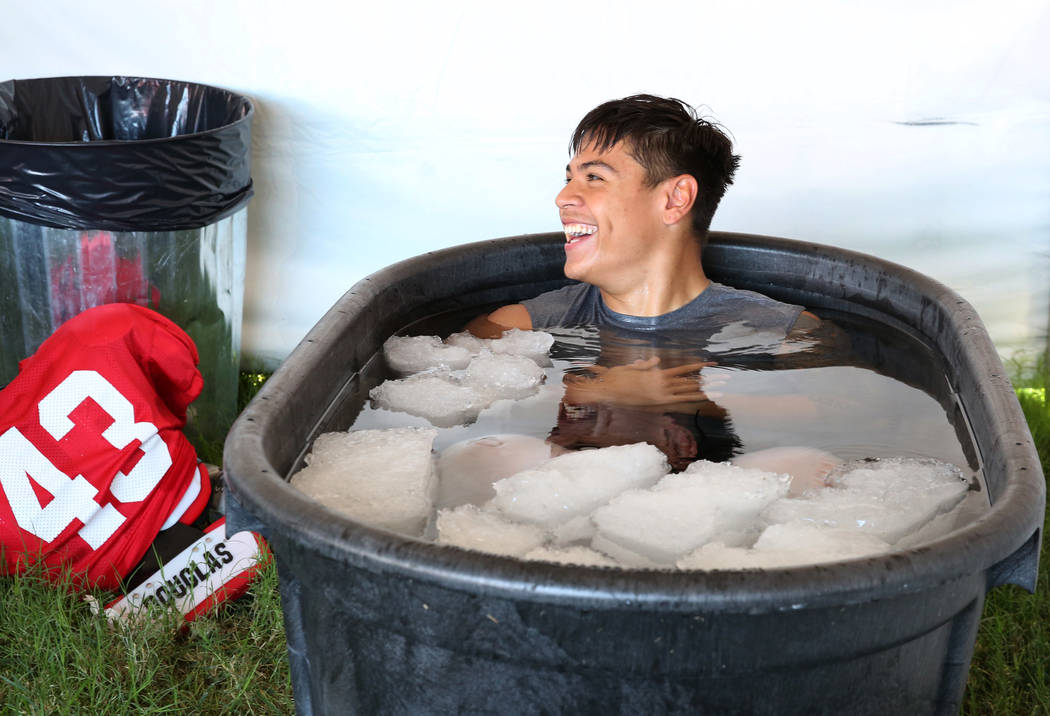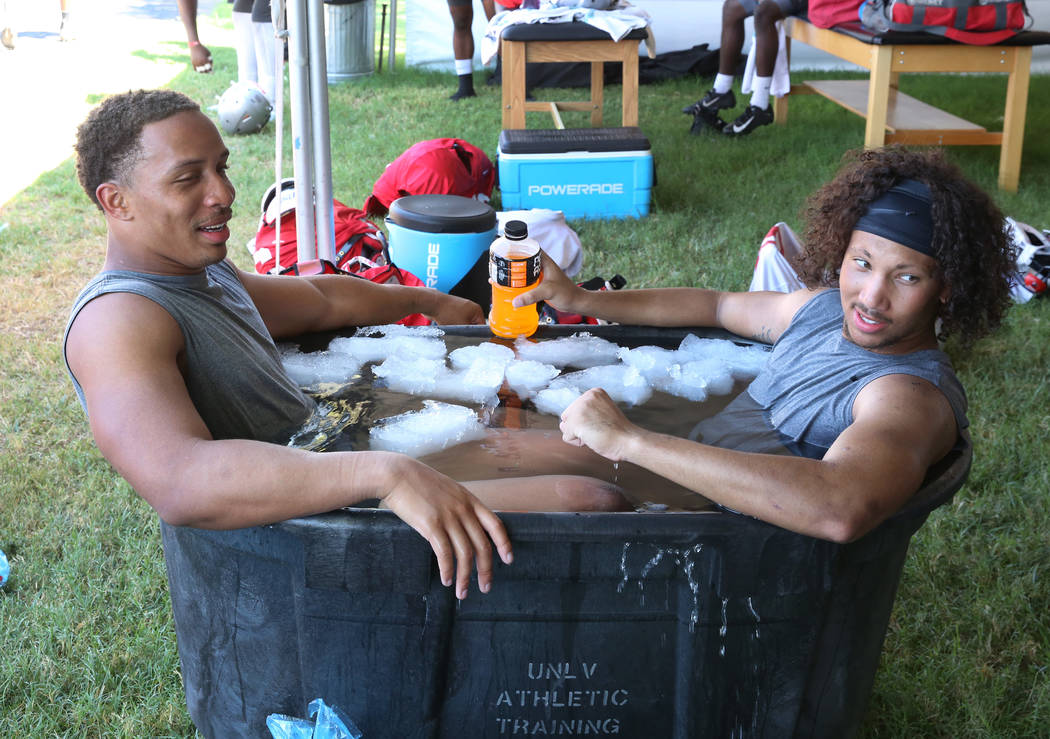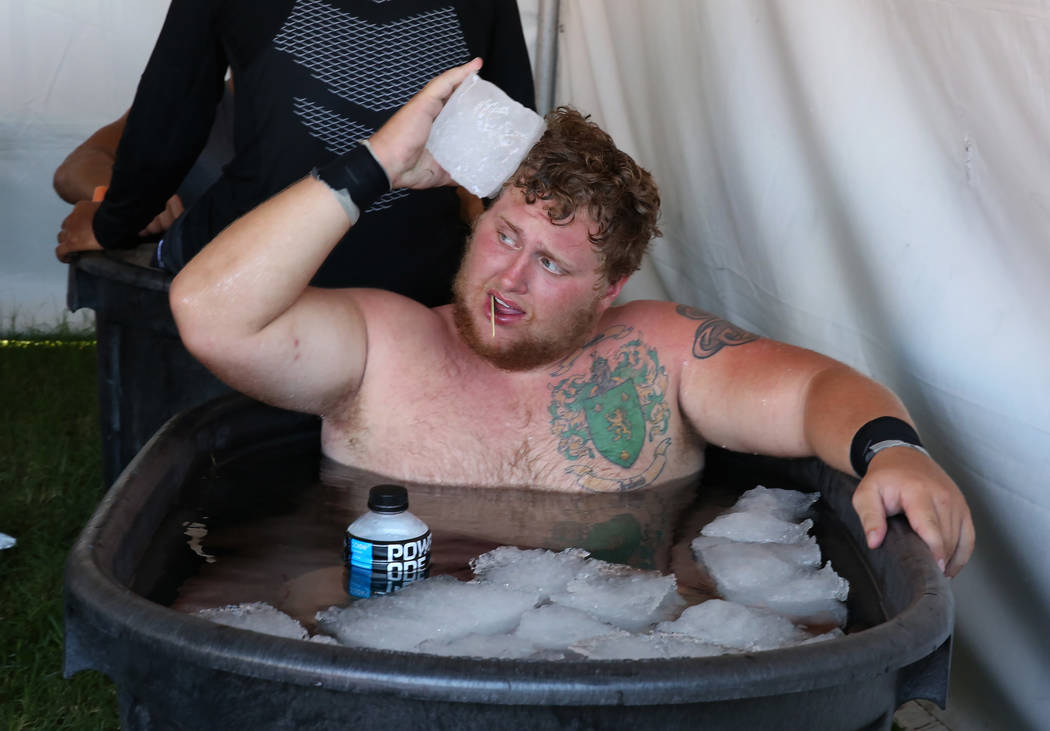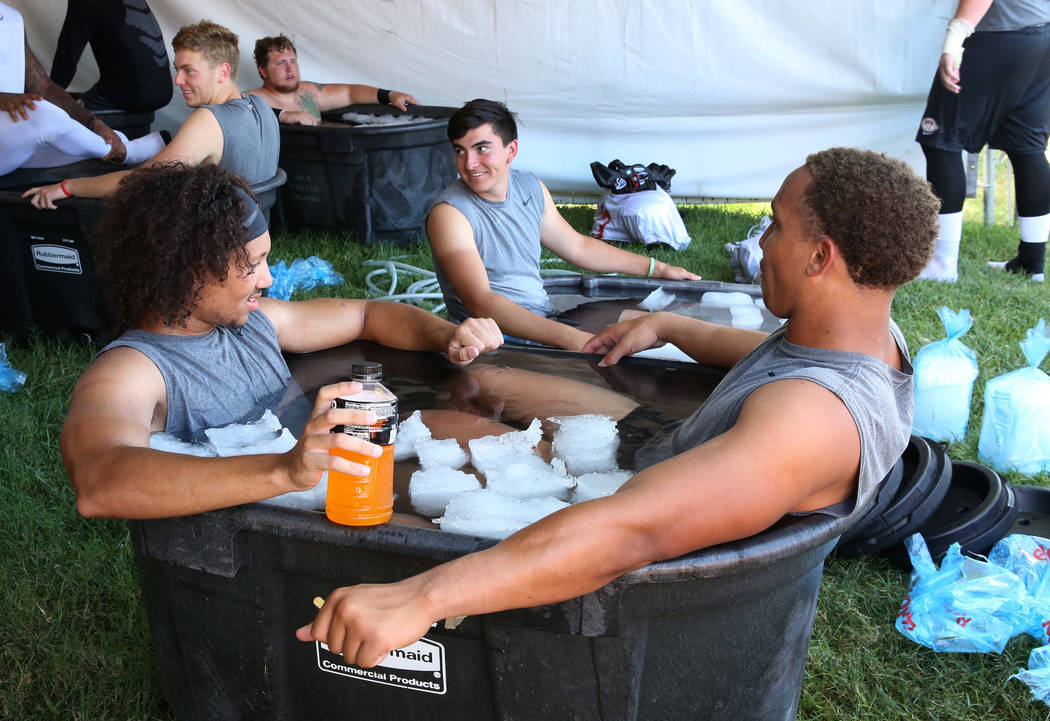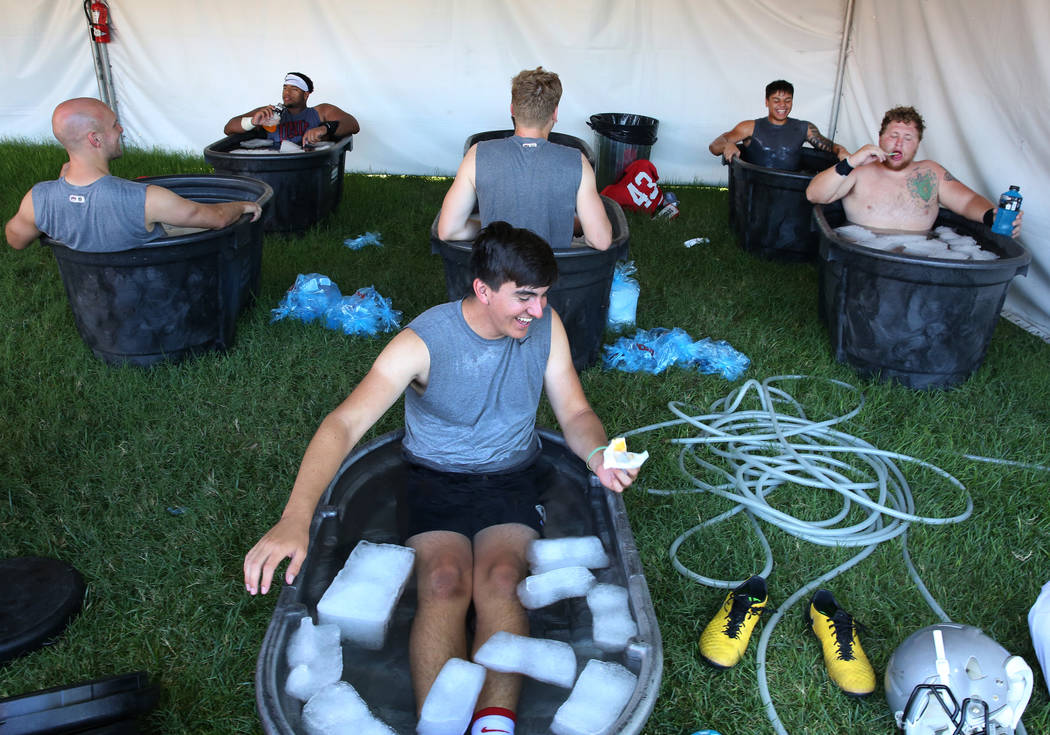UNLV football players make ice baths part of daily routine
The initial dip is the most challenging, sinking shoulder deep into frigid ice water after just practicing in nearly triple-digit temperatures.
“The first five minutes, you’ve got to tough it out,” UNLV redshirt freshman linebacker Malakai Salu said. “That’s when you feel it the most. Then after that, you just get numb and relax. You try not to move, because when you move, it gets colder.”
UNLV football players are encouraged to sit in one of the seven 100-gallon ice tubs after each morning practice at Rebel Park. While the idea of wading in 55-degree water might give most chills, the older players often run to the tubs because they understand from experience the benefits of a late-morning soak.
Some even ask for more ice after what is often a 2½-hour practice.
“You feel a lot better,” Salu said. “Your body feels a lot cooler. Your muscles are a lot less tense.”
UNLV, of course, is not unique in using ice tubs. Football programs at every level have them, so Rebels players know it’s part of the daily routine.
Even so, there is cold and then there is major-college-level cold.
“In juco, I had a little bit of ice, but it wasn’t cold like it is now,” said junior defensive tackle Tavis Malakius, a transfer from Fort Scott (Kansas) Community College. “It kind of shocked me when we had the big ol’ blocks of ice. It was very cold, I’m not going to lie. Ice baths do it to you. They get your body back flowing. You can be as sore as you want to be. As soon as you get in there, your body comes back 100 percent.”
The tubs sit underneath a tent just off the practice fields, so going to those is a little more convenient than walking down the short path to Lied Athletic Complex to reach the locker room showers.
UNLV’s coaches and trainers, however, would want players to use the ice tubs even if they were next door to the showers.
“It makes their legs feel better,” said Kyle Wilson, assistant athletic director of sports medicine. “It helps to increase circulation. It helps them to recover a little better between this practice and the next one.”
Players usually soak for five to 10 minutes, which is about the right amount of time for the water to properly cool their bodies. Some remain a little longer than 10 minutes.
“You can stay in there too long,” Wilson said. “It does lower your core temperature, and you start getting shakes. You feel like you’re in a snowbank somewhere, and your body starts shivering to try to generate heat to warm itself up.”
The tubs are primarily available in case a player needs to leave practice because of heat exhaustion. Players rarely take such a break because the practices often begin at 8 a.m. and end around 10:30, and there are water stoppages throughout. NCAA safety rules in recent years also have limited how much hitting takes place and eliminated two-a-day practices.
But football remains a physical and demanding sport, and training camp takes place during the hottest time of the year when heat advisories are common.
“We always want to be prepared,” Wilson said.
To further combat heat exhaustion, Wilson said each player is weighed before and after practice to determine how much water weight was lost, and players are required to drink enough that day to make up the difference. They also are told to get at least eight hours of sleep, and from one morning practice to the next must eat four meals — lunch, dinner, a snack and breakfast.
The ice baths are an important part of that training and recovery process.
Players know what to expect, even if the idea of jumping into an ice tub isn’t compelling to the average person.
“I’m pretty used to it now,” sophomore guard Jackson Reynolds said. “I’ve been doing it for a while, but it’s definitely really cold to get in there.”
More Rebels: Follow at reviewjournal.com/Rebels and @RJ_Sports on Twitter.
Contact reporter Mark Anderson at manderson@reviewjournal.com. Follow @markanderson65 on Twitter.
UNLV TRAINING CAMP
First day: Aug. 2
Mornings practiced: 10
Afternoons practiced: 1
Evenings practiced: 3
Hottest day: 111 degrees Aug. 5
Days 110 degrees or higher: 2
Average historical high temperature this month: 104



